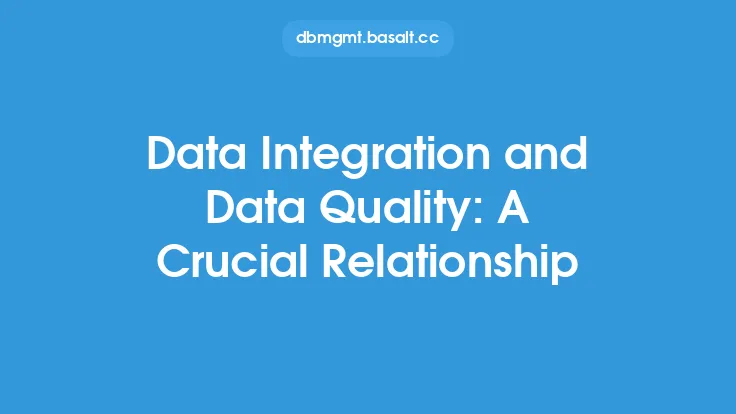Data preparation and analysis are critical components of any data-driven organization. One of the essential steps in this process is data disaggregation, which involves breaking down complex data into smaller, more manageable parts. This process enables organizations to gain a deeper understanding of their data, identify trends and patterns, and make informed decisions. In this article, we will delve into the world of data disaggregation, exploring its importance, benefits, and applications in data preparation and analysis.
Introduction to Data Disaggregation
Data disaggregation is the process of decomposing aggregate data into its constituent parts. This involves breaking down data into smaller units, such as individual transactions, customer interactions, or product sales. By doing so, organizations can gain a more detailed understanding of their data, which can help identify areas of improvement, optimize business processes, and inform strategic decision-making. Data disaggregation is an essential step in data preparation, as it enables organizations to transform raw data into actionable insights.
Benefits of Data Disaggregation
The benefits of data disaggregation are numerous. By breaking down aggregate data into smaller parts, organizations can identify trends and patterns that may not be apparent at the aggregate level. This can help organizations to better understand their customers, products, and services, and make informed decisions about how to optimize their business. Additionally, data disaggregation can help organizations to identify areas of inefficiency, reduce costs, and improve overall performance. Some of the key benefits of data disaggregation include:
- Improved data accuracy and quality
- Enhanced data analysis and insights
- Better decision-making and strategic planning
- Increased efficiency and productivity
- Reduced costs and improved profitability
Types of Data Disaggregation
There are several types of data disaggregation, each with its own unique characteristics and applications. Some of the most common types of data disaggregation include:
- Temporal disaggregation: This involves breaking down data into smaller time periods, such as daily, weekly, or monthly.
- Spatial disaggregation: This involves breaking down data into smaller geographic areas, such as cities, states, or countries.
- Categorical disaggregation: This involves breaking down data into smaller categories, such as product types, customer segments, or demographic groups.
- Hierarchical disaggregation: This involves breaking down data into smaller units, such as individual transactions or customer interactions.
Data Disaggregation Techniques
There are several data disaggregation techniques that organizations can use to break down aggregate data into smaller parts. Some of the most common techniques include:
- Data mining: This involves using statistical and mathematical techniques to identify patterns and trends in large datasets.
- Data partitioning: This involves dividing data into smaller subsets, such as customer segments or product categories.
- Data aggregation: This involves combining data from multiple sources into a single, unified view.
- Data visualization: This involves using graphical and visual techniques to represent data in a clear and concise manner.
Challenges and Limitations of Data Disaggregation
While data disaggregation is a powerful tool for data analysis and insights, it also presents several challenges and limitations. Some of the most common challenges and limitations include:
- Data quality issues: Poor data quality can make it difficult to disaggregate data accurately and reliably.
- Data complexity: Large and complex datasets can be difficult to disaggregate, particularly if they involve multiple variables and relationships.
- Computational resources: Data disaggregation can require significant computational resources, particularly if it involves large datasets or complex algorithms.
- Interpretation and analysis: Disaggregated data can be difficult to interpret and analyze, particularly if it involves multiple variables and relationships.
Best Practices for Data Disaggregation
To get the most out of data disaggregation, organizations should follow several best practices. Some of the most important best practices include:
- Ensure data quality: High-quality data is essential for accurate and reliable data disaggregation.
- Use appropriate techniques: Different data disaggregation techniques are suited to different types of data and analysis.
- Consider computational resources: Data disaggregation can require significant computational resources, particularly if it involves large datasets or complex algorithms.
- Interpret and analyze results: Disaggregated data can be difficult to interpret and analyze, particularly if it involves multiple variables and relationships.
Conclusion
Data disaggregation is a critical step in data preparation and analysis, enabling organizations to break down complex data into smaller, more manageable parts. By doing so, organizations can gain a deeper understanding of their data, identify trends and patterns, and make informed decisions. While data disaggregation presents several challenges and limitations, it also offers numerous benefits, including improved data accuracy and quality, enhanced data analysis and insights, and better decision-making and strategic planning. By following best practices and using appropriate techniques, organizations can unlock the full potential of data disaggregation and drive business success.





